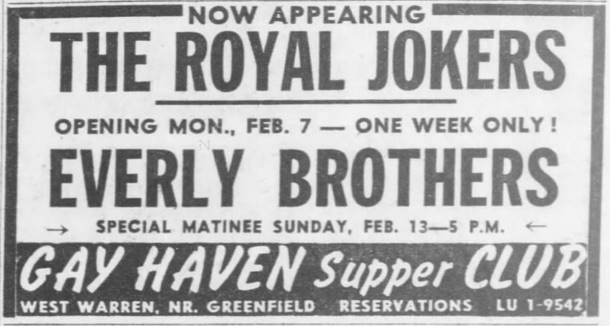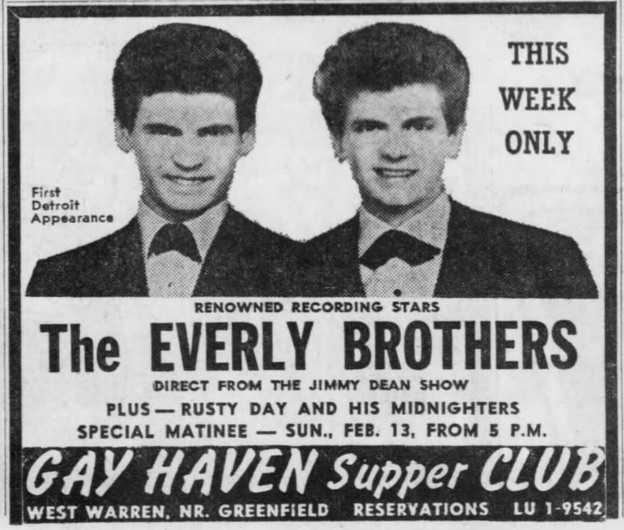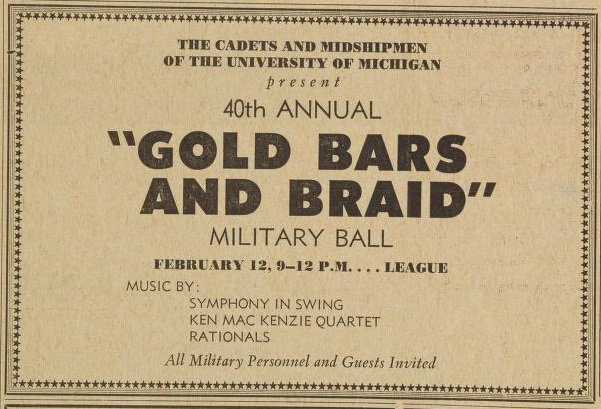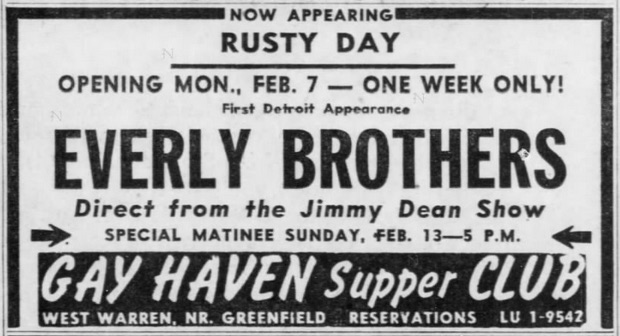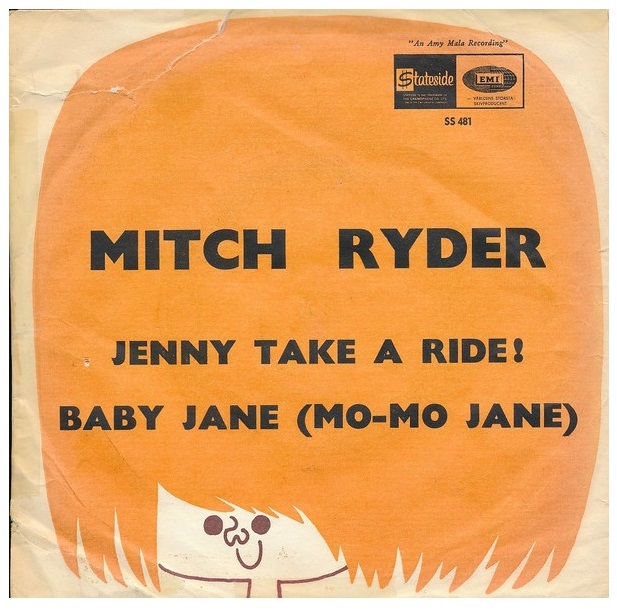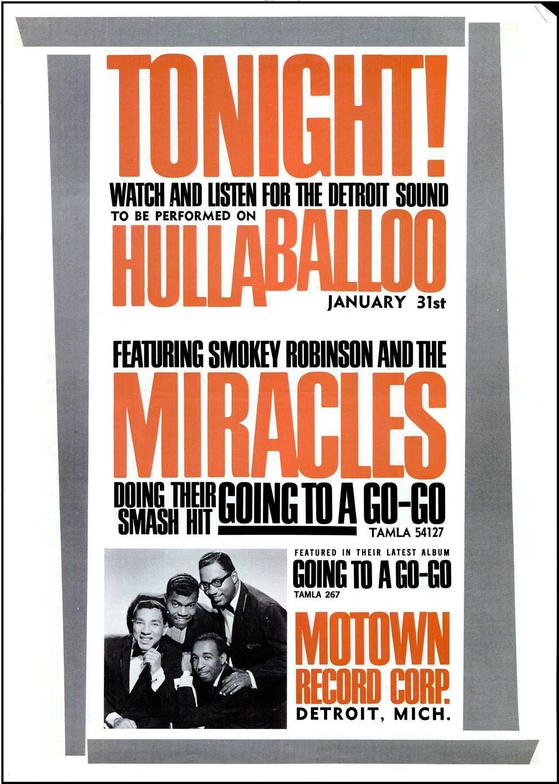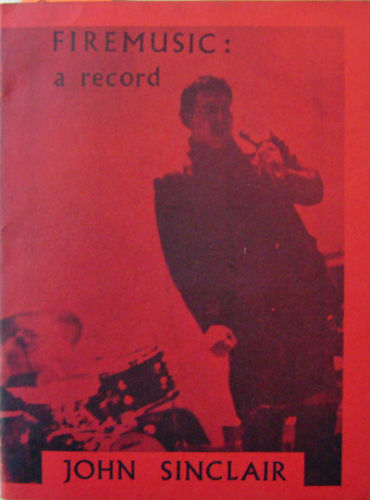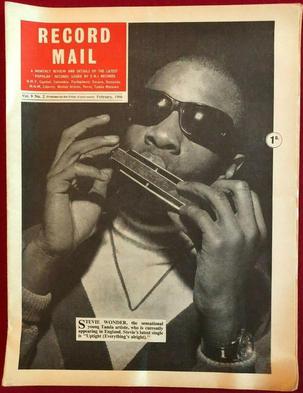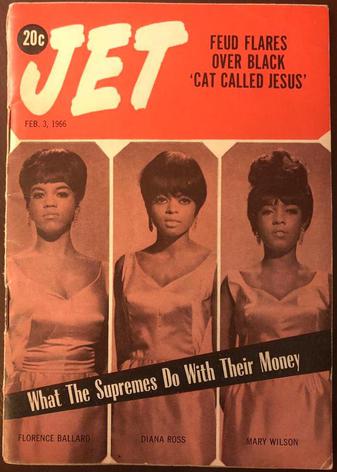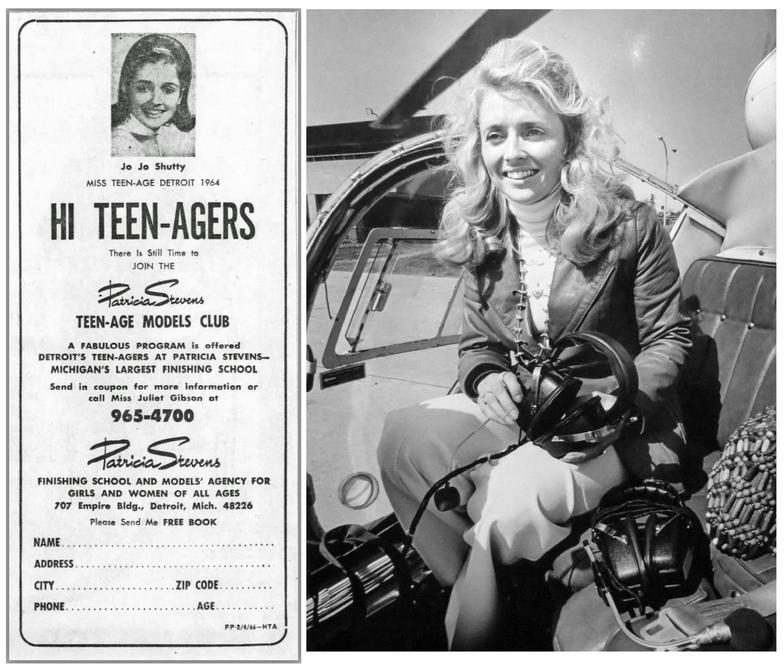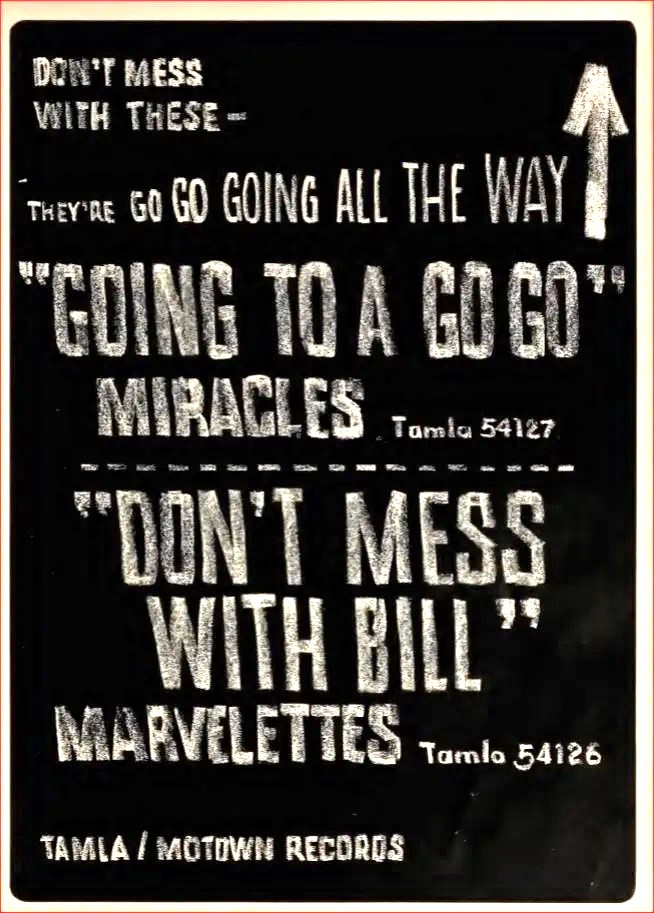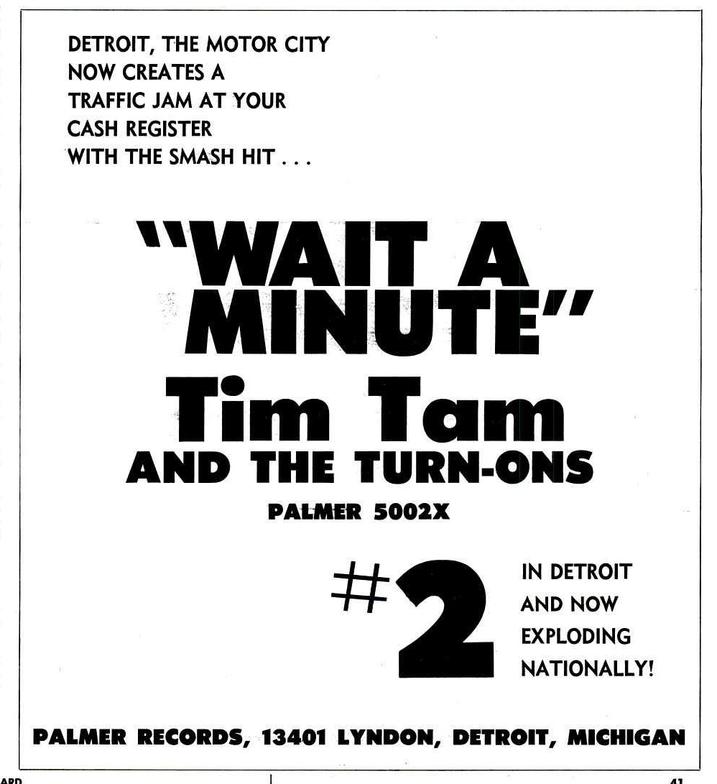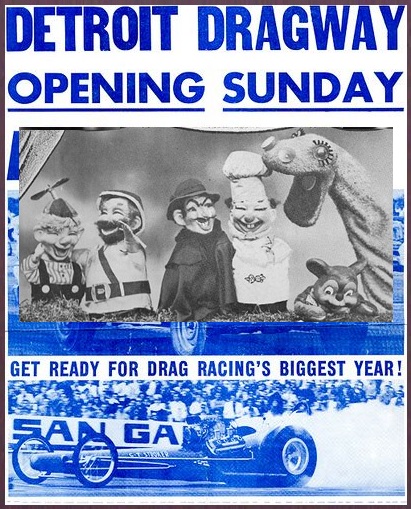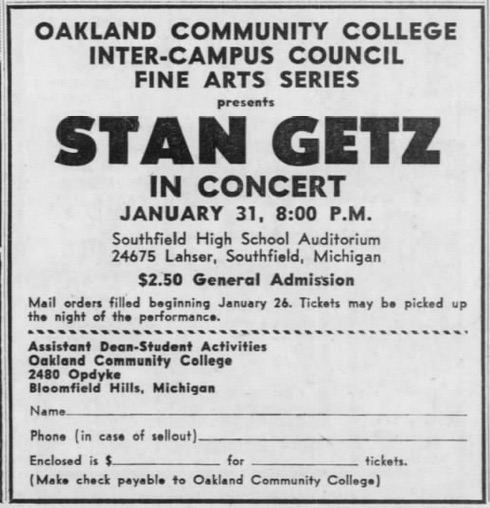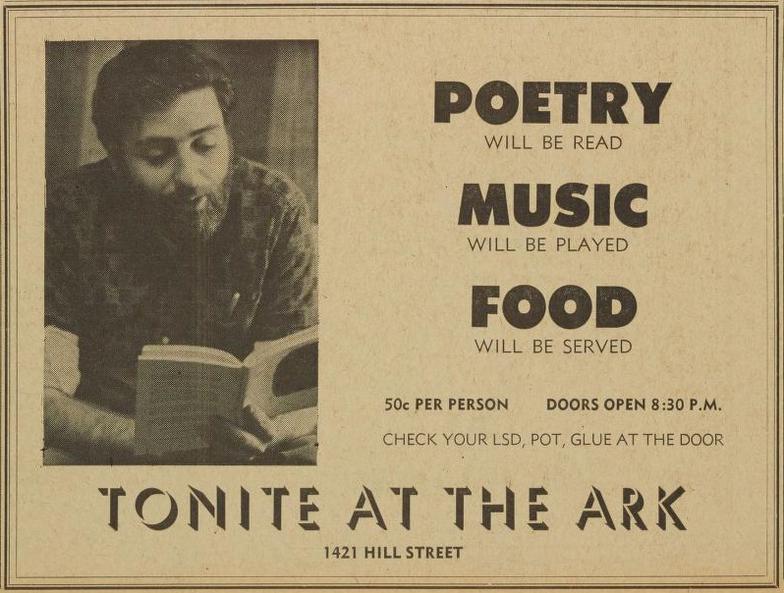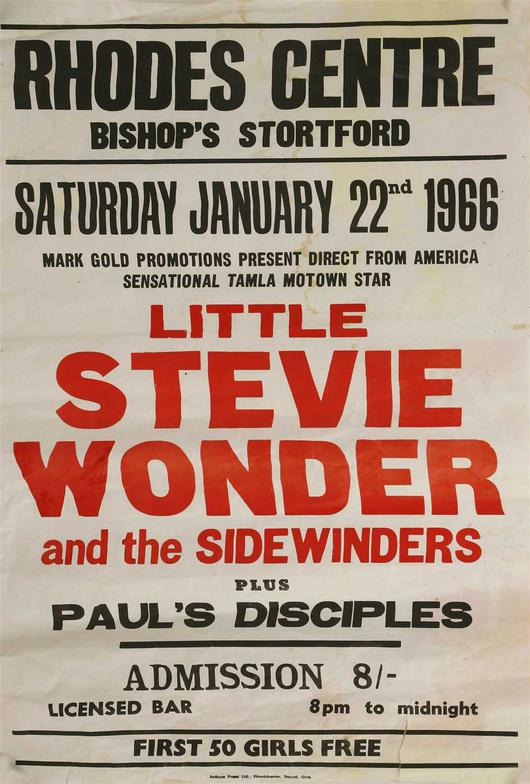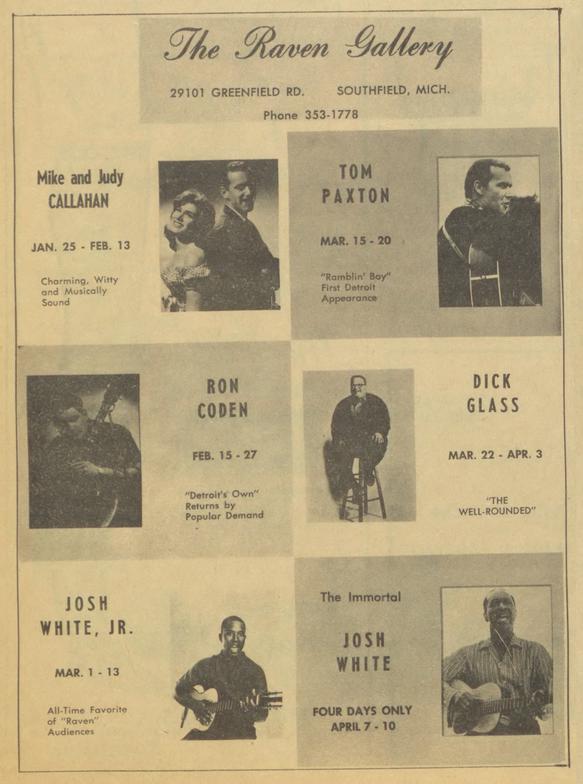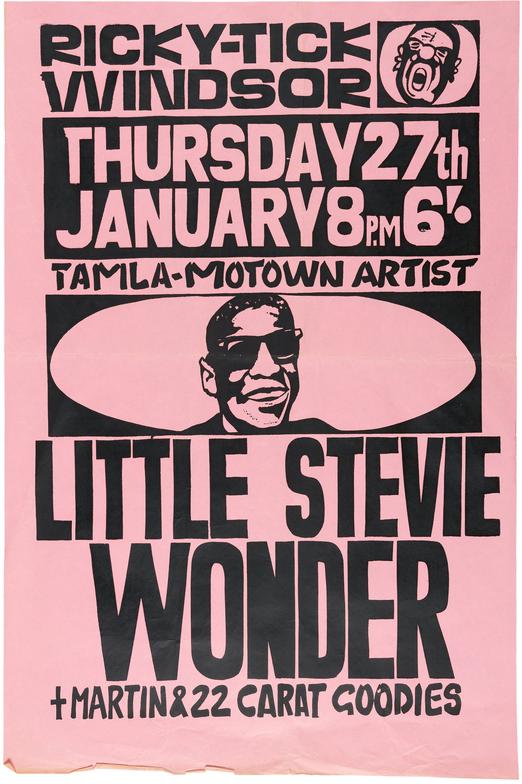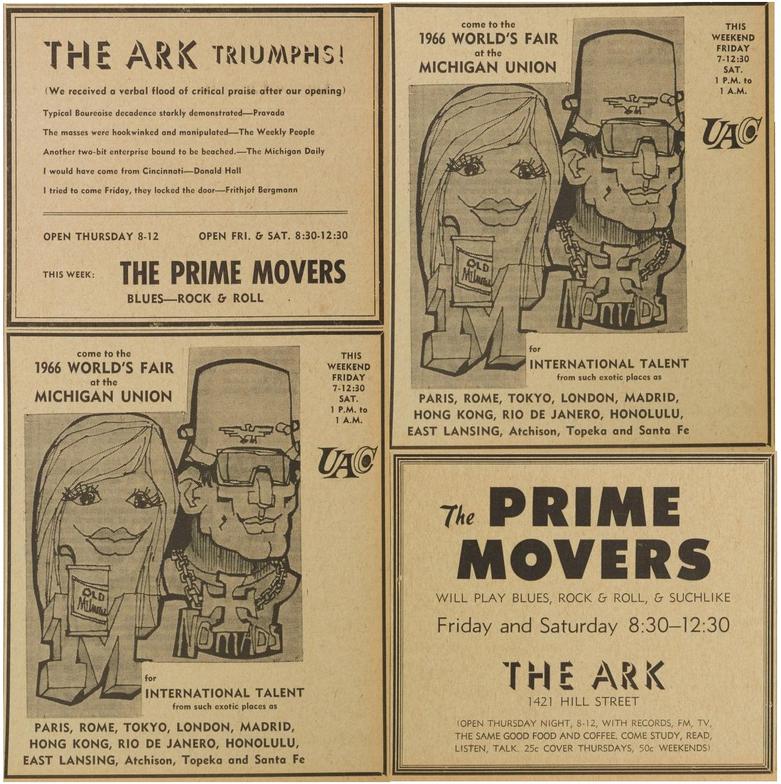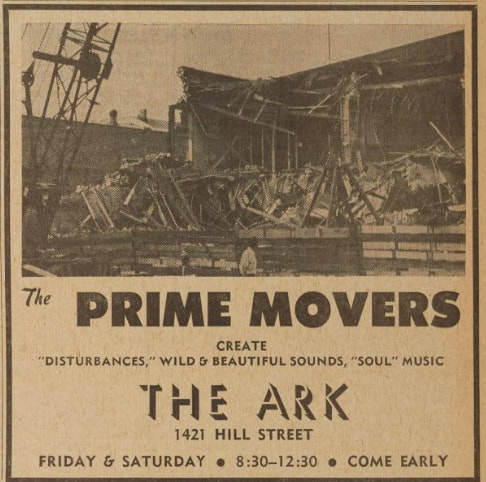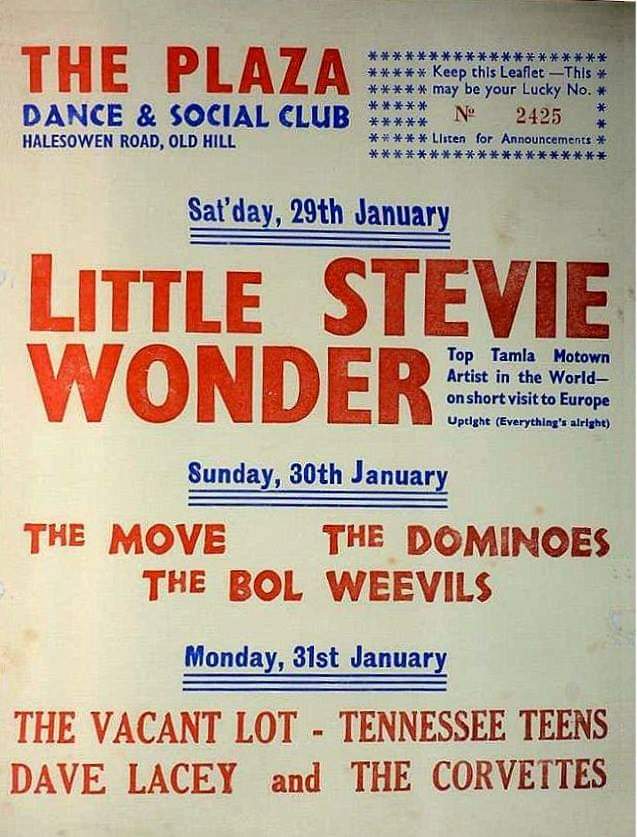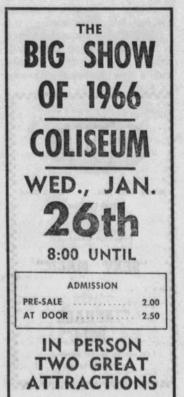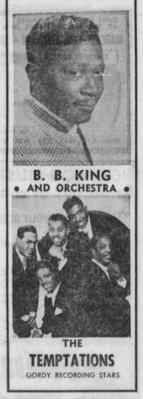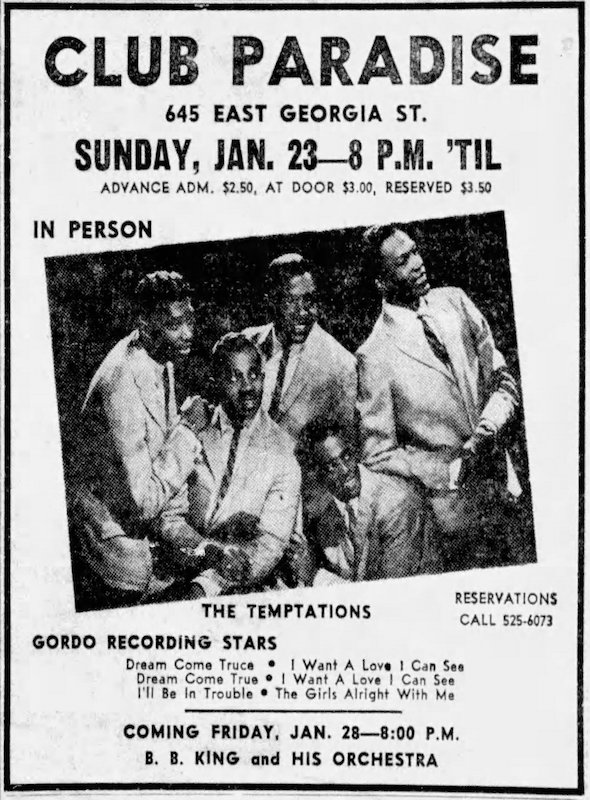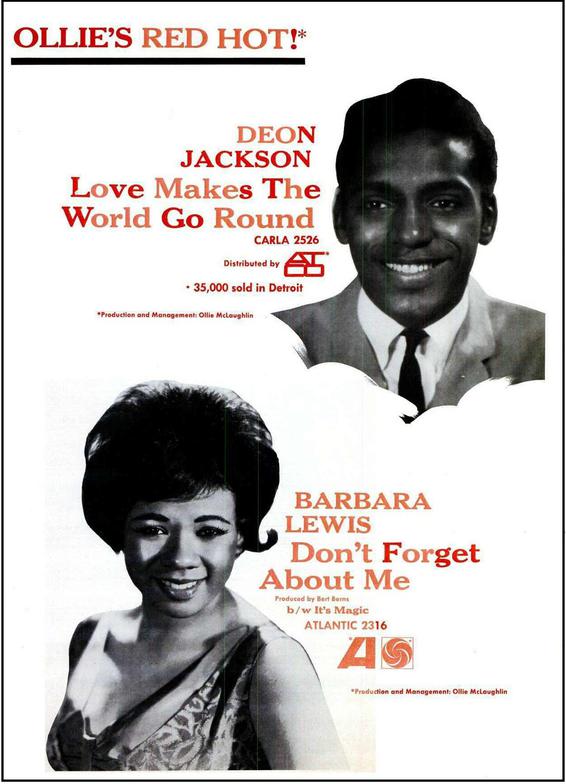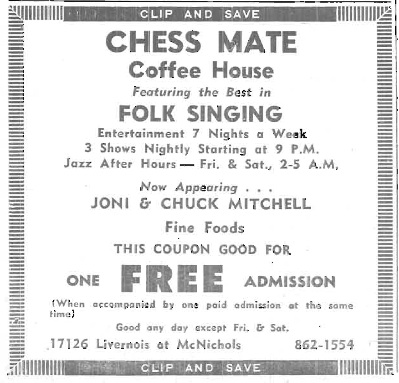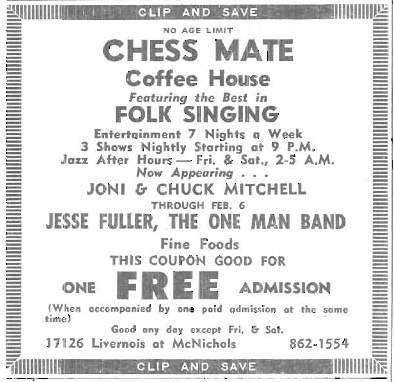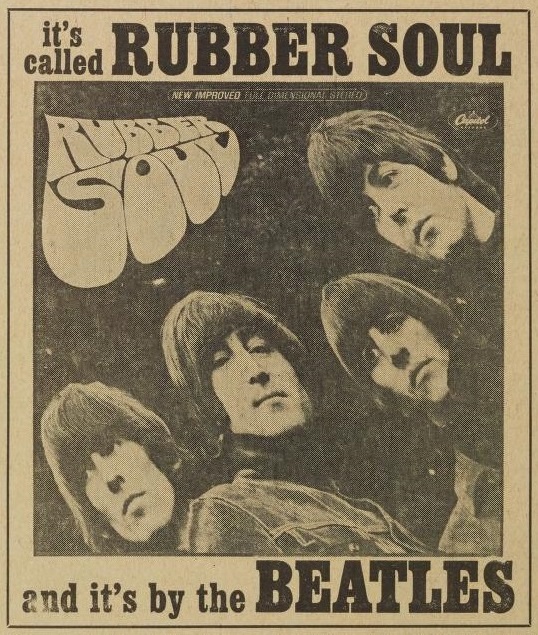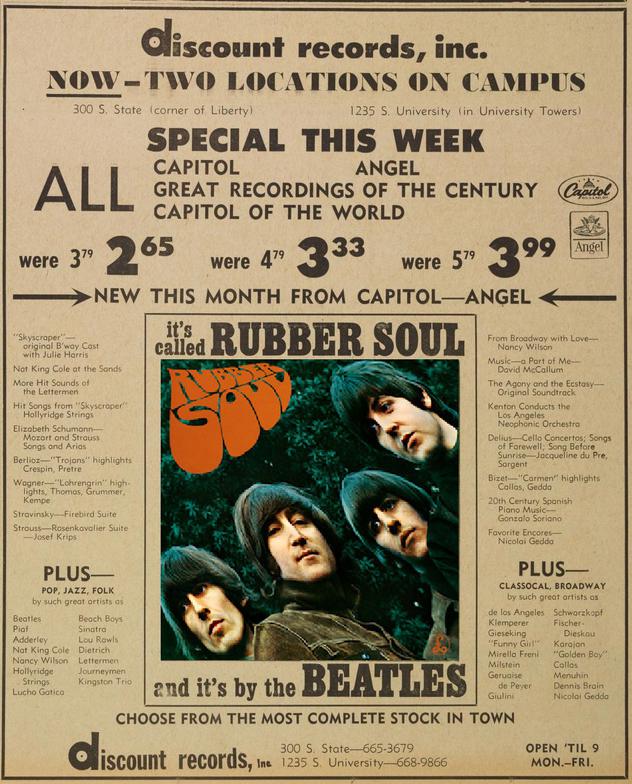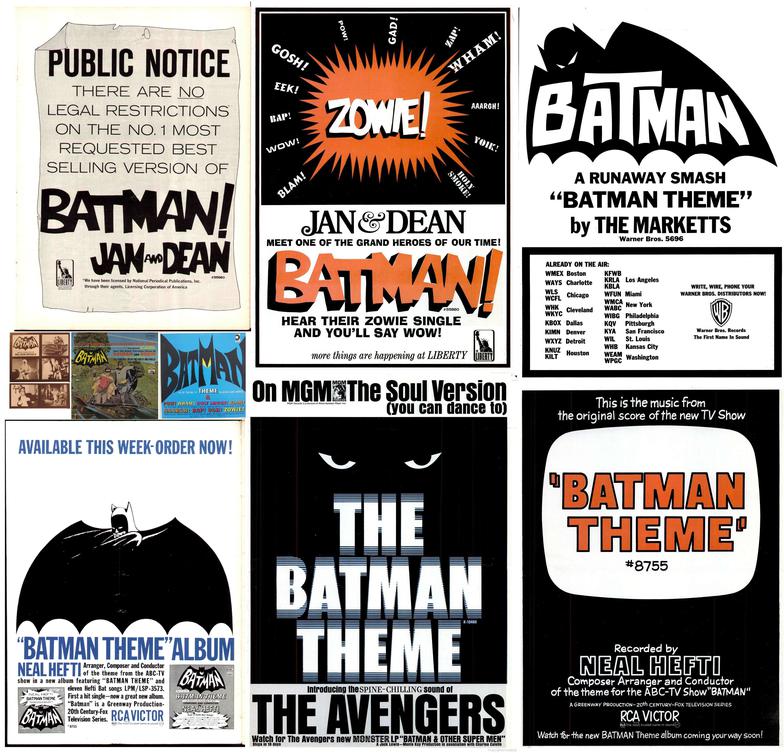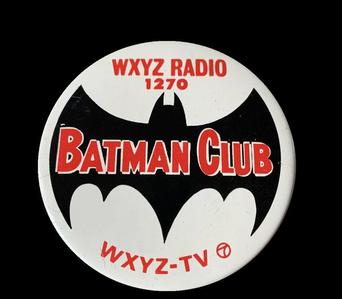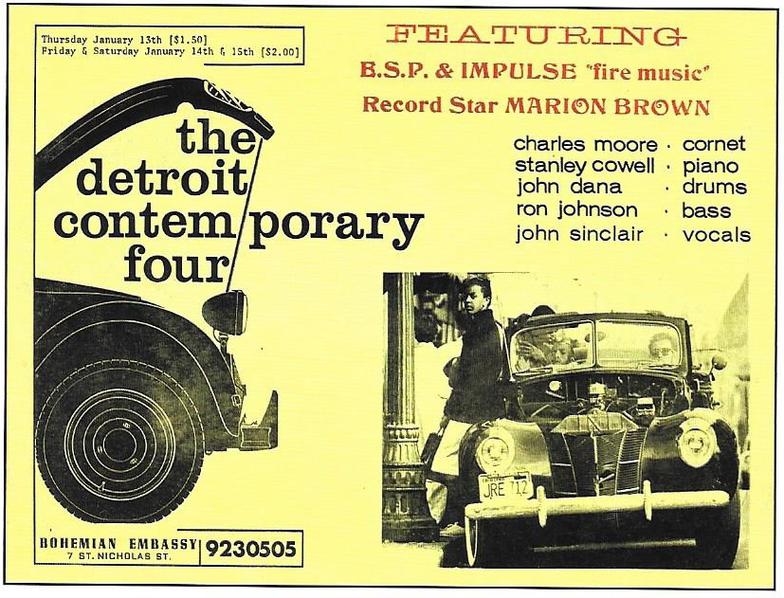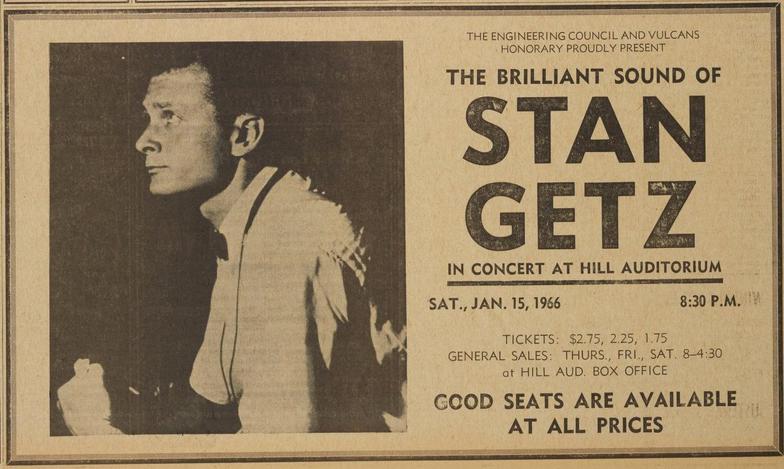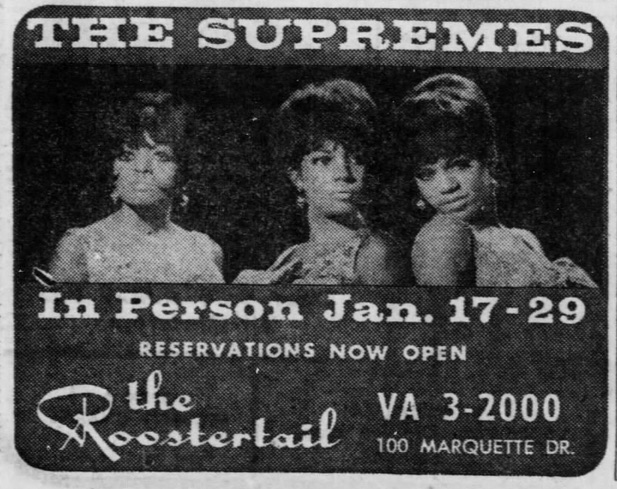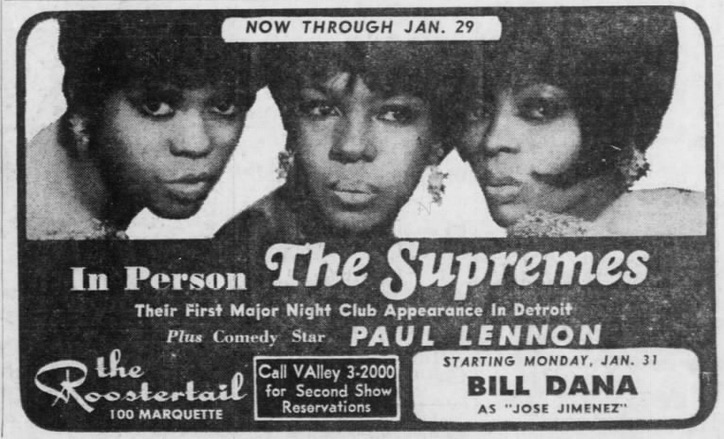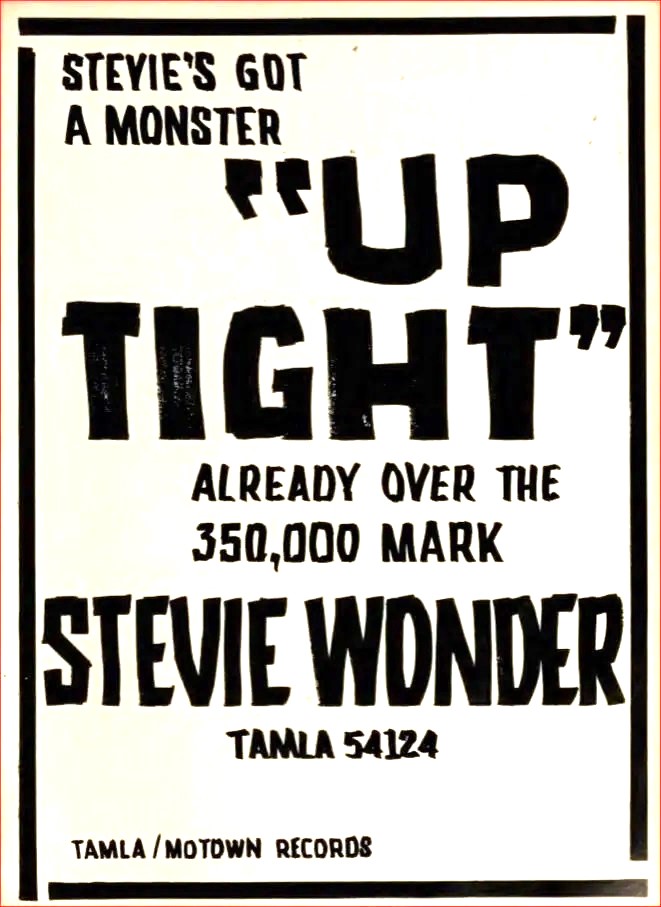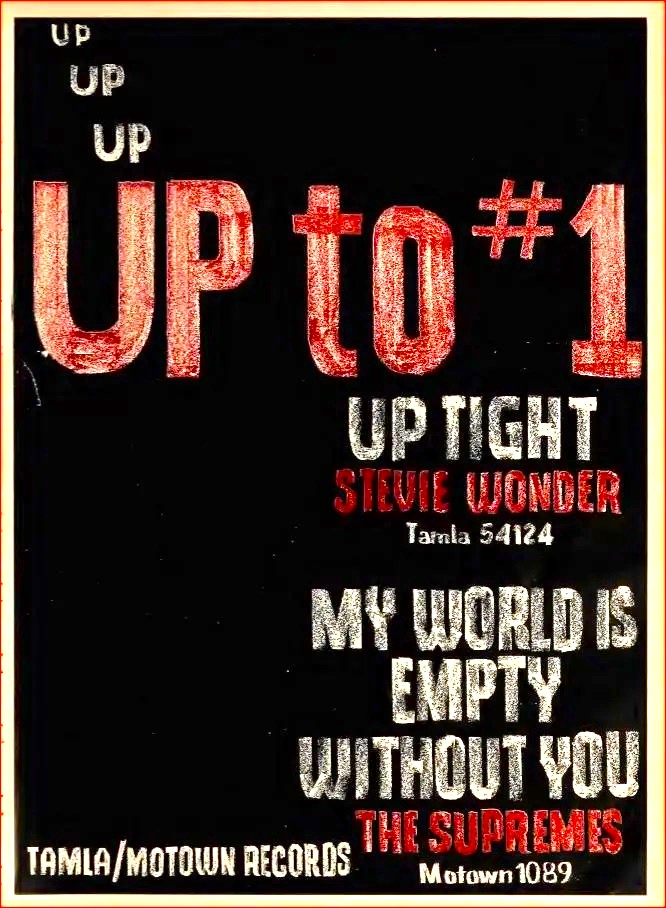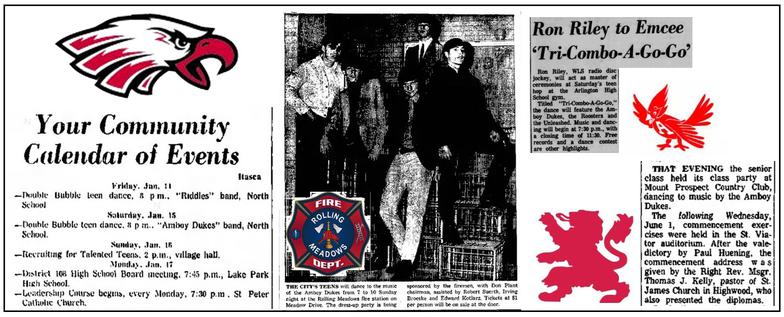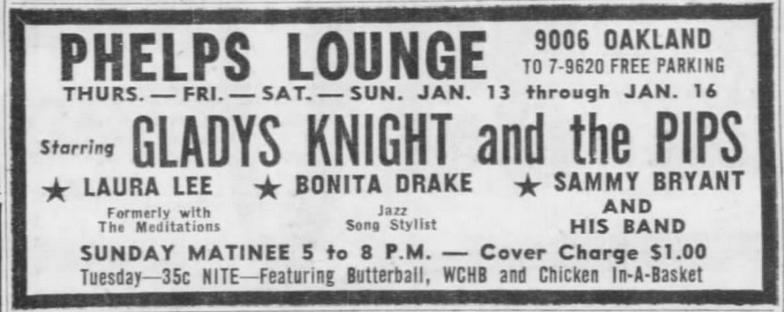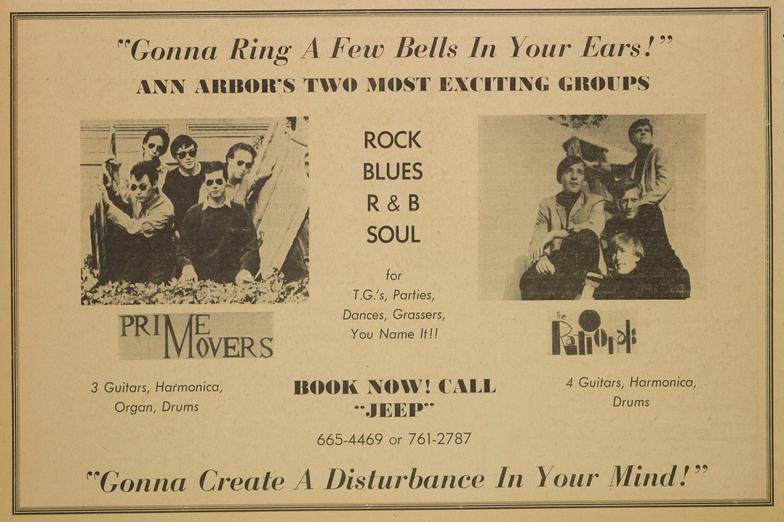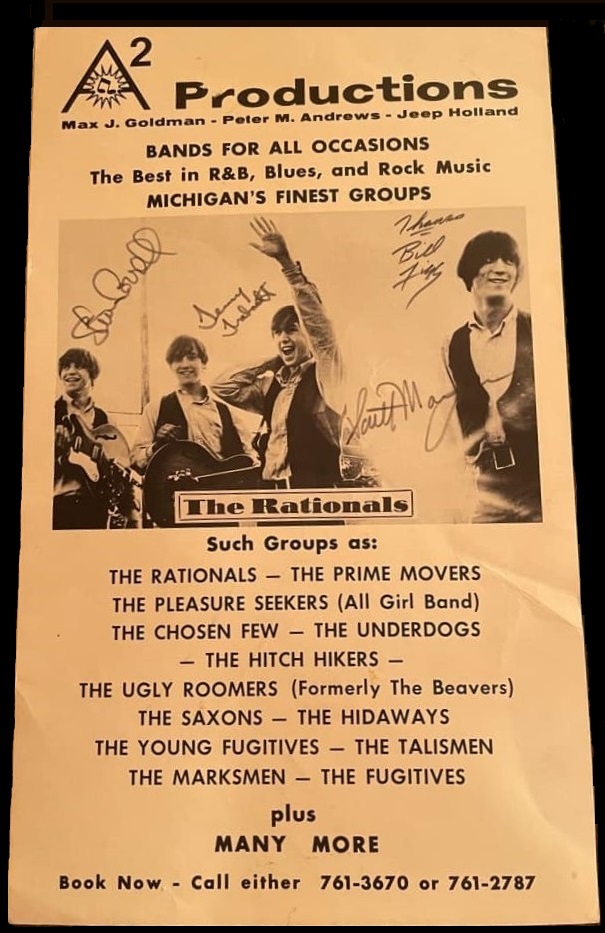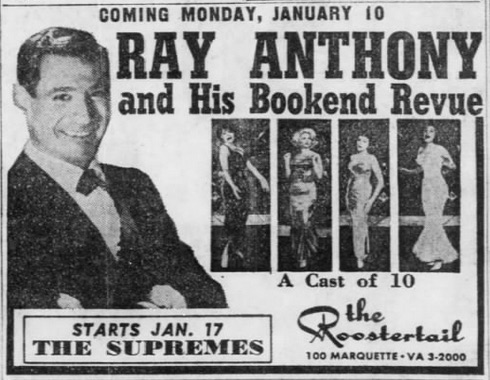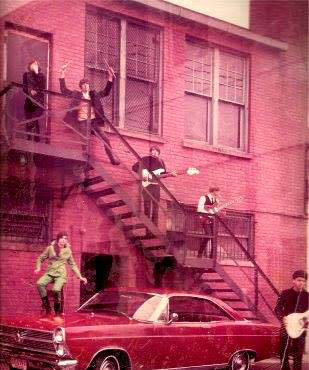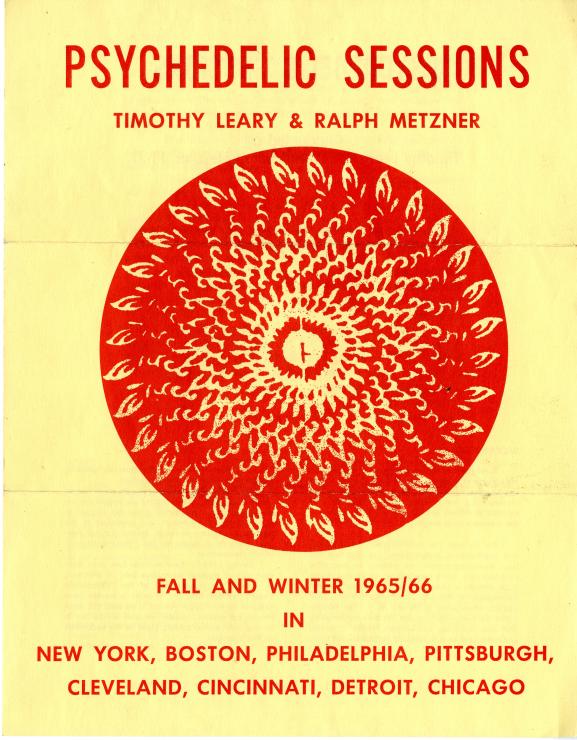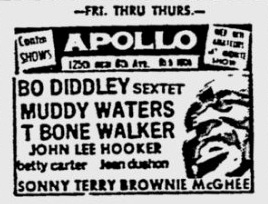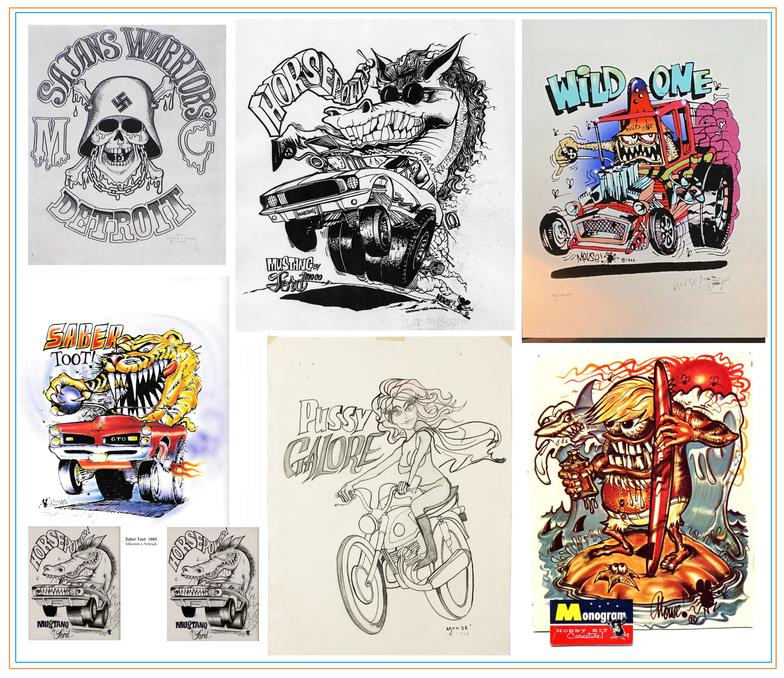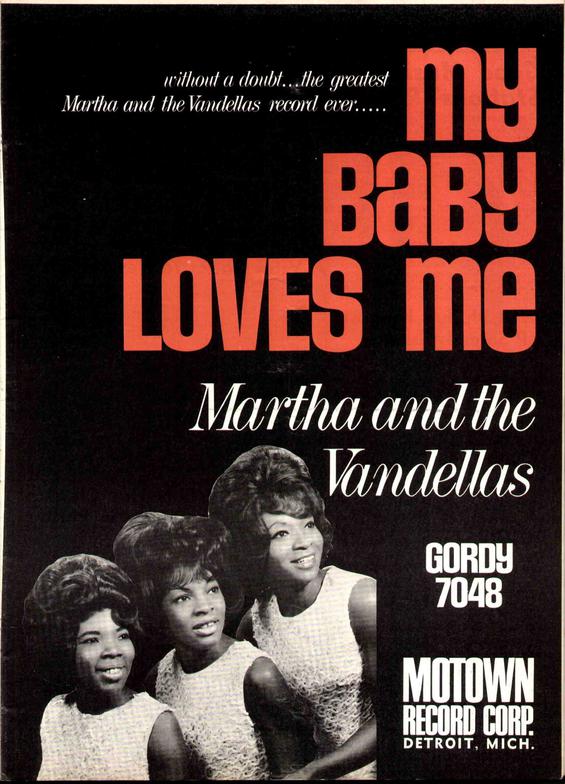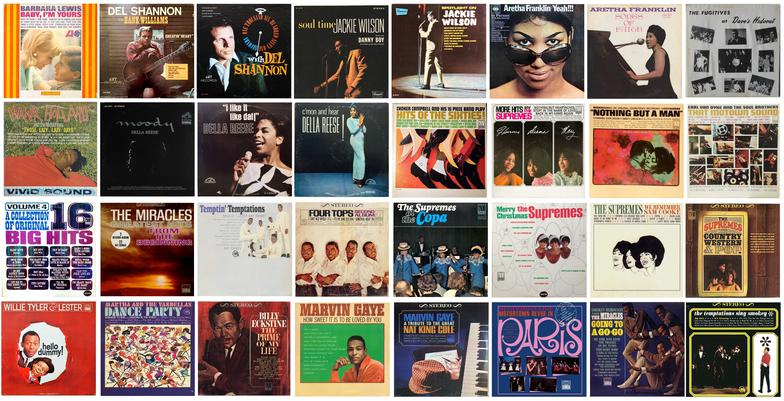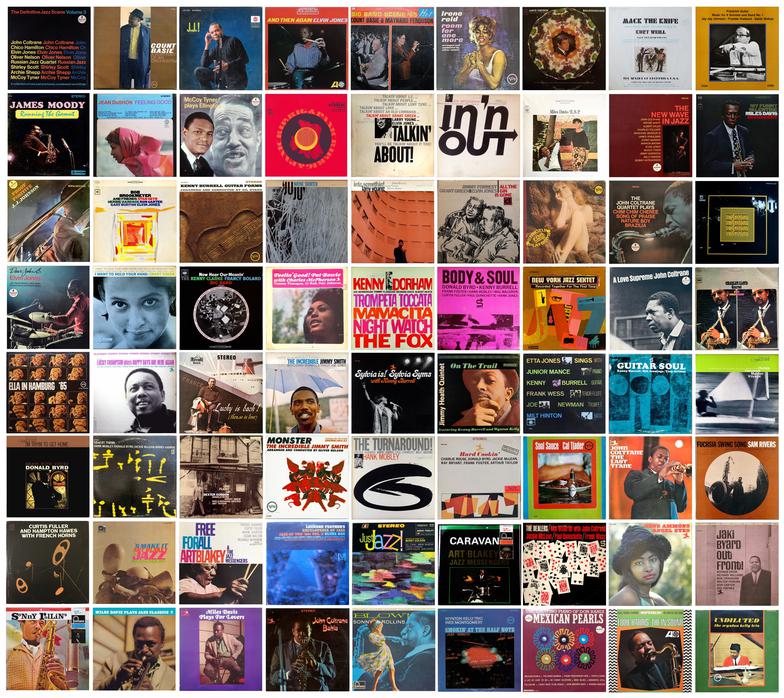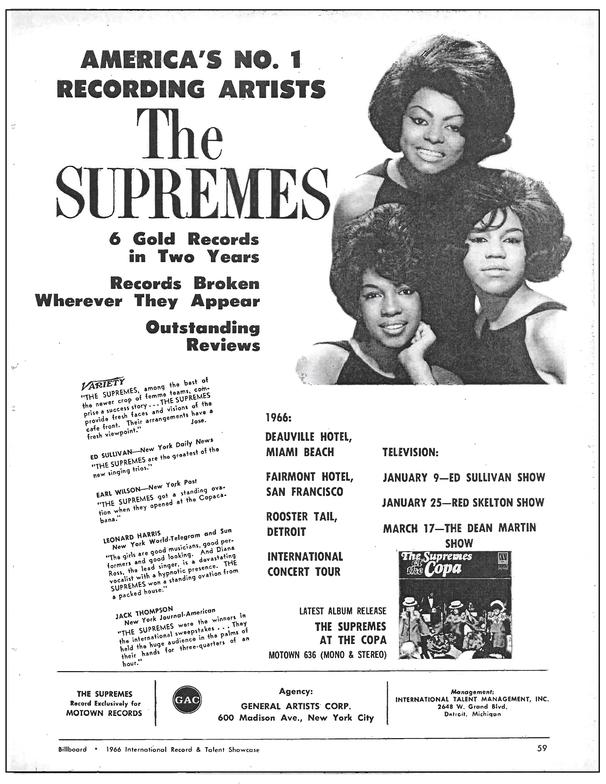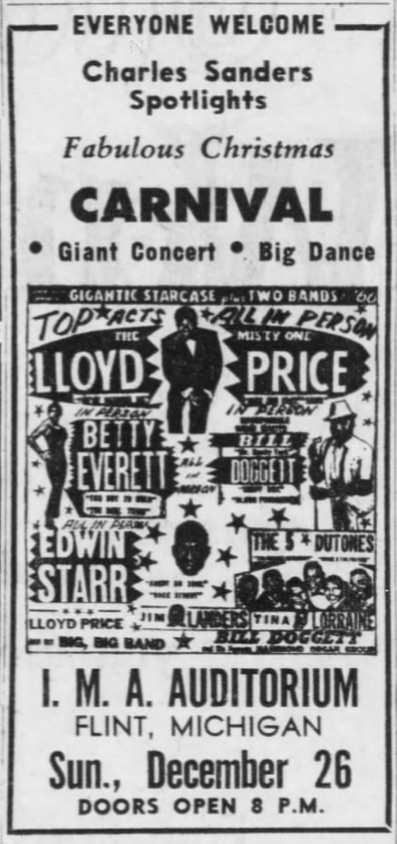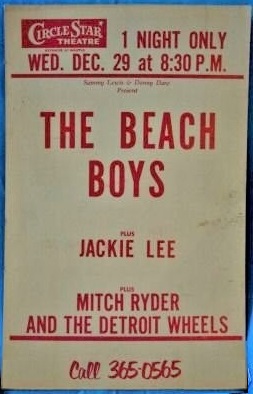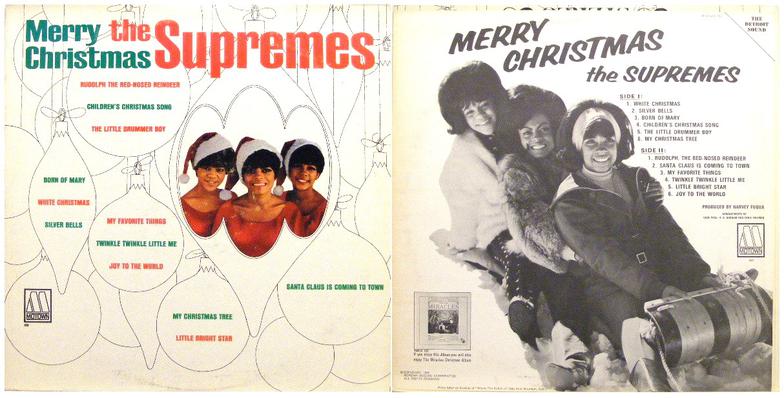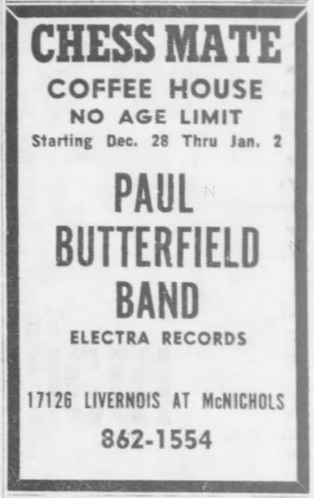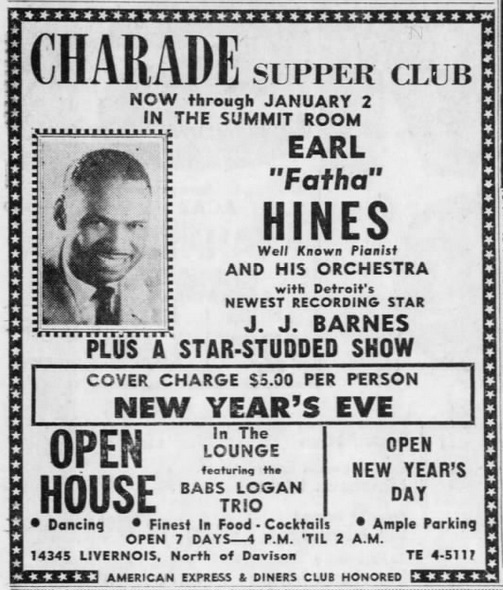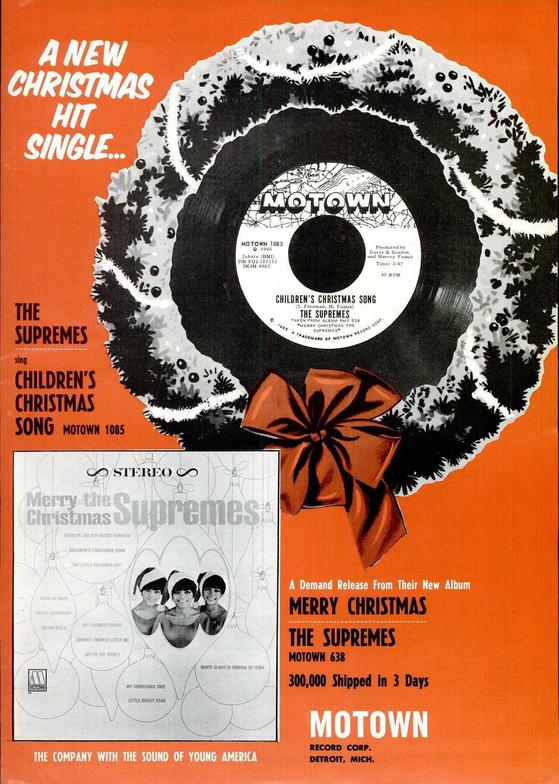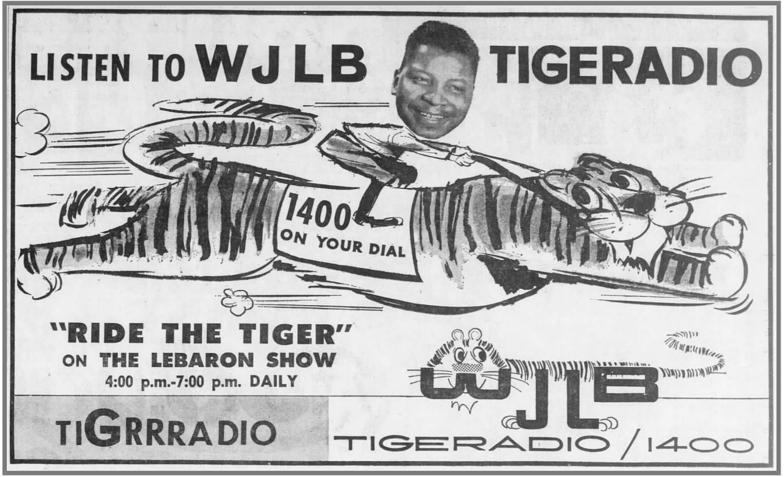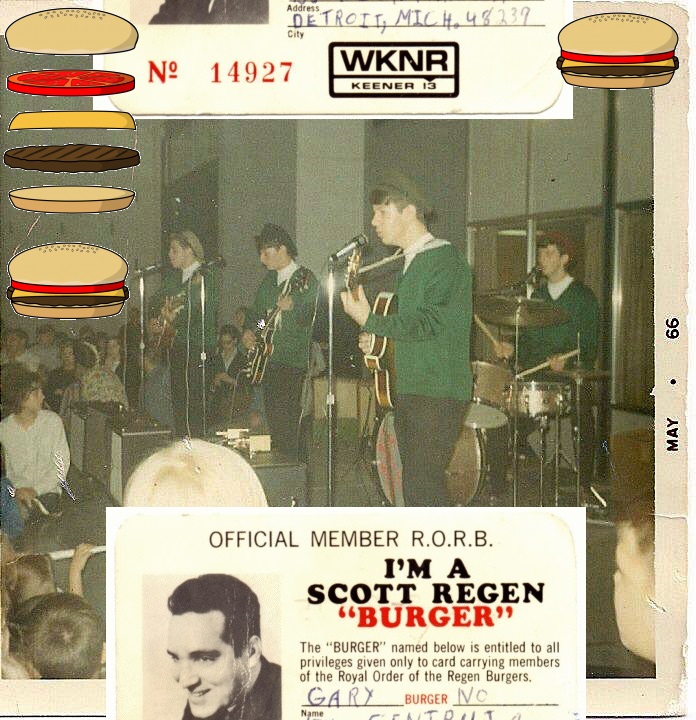Splatt Gallery
Double click here to add text.
Splatt Gallery's History of Michigan Music Posters
Volume Two - 1964-1966 - Page Eleven
************************************************************
Volume Two - 1964-1966 - continues - HERE
An ad for the Everly Brothers at the Club Gay Haven in Dearborn, Michigan, February 7-13, 1966. Although the ad says “First Detroit Appearance”, the Everly Brothers were part of Alan Freed’s “Biggest Show of Stars for 1957” at the Fox Theater in Detroit in November 1957, but the ad could mean their first appearance as headliners. They would return to the Club Gay Haven again for seven nights in August 1966, which would be their final Michigan appearances until the reunion shows of the 1980’s.
Also of note are the openers, Rusty Day & the Midnighters.
The Everly Brothers were long past their hit-making days of the 1950’s, but they continued to release some solid albums, one of which included this song, written by Delaney Bramlett and backed by the famous Wrecking Crew band of studio musicians in Los Angeles, California.
The Everly Brothers – (You Got) The Power of Love (1966)
https://www.youtube.com/watch?v=yPrIou5imno
Military cadet ball at the University of Michigan in Ann Arbor, February 12, 1966, with The Rationals on the bill.
For the week ending January 29, 1966, “Jenny Take A Ride” by Mitch Ryder & the Detroit Wheels peaked at #10 on the Billboard Hot 100 chart after eight weeks on the chart. It was the first national Top Ten record for a Michigan rock act since Del Shannon’s “Keep Searchin’” peaked at #9 exactly a year earlier on January 30, 1965.
Shown above is the picture sleeve for the Swedish release of the single. Below is a clip of the band faking it on the Hullabaloo TV show.
Mitch Ryder & The Detroit Wheels – Jenny Take A Ride (1965)
https://www.youtube.com/watch?v=TrOvQ9JAf3g
A Motown Records ad for an appearance by Smokey Robinson & the Miracles on the Hullabaloo TV show, January 31, 1966. In the clip below, from the show, Robinson’s vocals are live over the recorded instrumentation and background vocals, and we’re also told that one of the go-go dancers in the cages is the aspiring actress Terri Garr.
Smokey Robinson & the Miracles – Going to a Go-Go (live TV) (1/31/66)
https://www.youtube.com/watch?v=C0aFccufx-o
The Detroit Artists Workshop Workbook #8, "Firemusic: a record" by John Sinclair, published in February 1966. Cover photo by Magdelene Sinclair.
Stevie Wonder on the cover of the February 1966 issue of the British music magazine Record Mail while he was on tour in the UK.
The Supremes on the cover of the February 3, 1966 issue of Jet magazine for the story “What The Supremes Do With Their Money”.
An ad in the February 4, 1966 edition of the Detroit Free Press newspaper for the Patricia Stevens Finishing School and Models’ Agency featuring the 1964 Miss Teen-Age Detroit Jo Jo Shutty. Shutty will later become the nation’s first female helicopter traffic reporter when she gets the job with CKLW Radio in 1974.
A full-page Motown Records ad in the February 5, 1966 issue of Cash Box magazine, continuing with their “chalkboard” format.
“Going to a Go Go” by the Miracles peaked at #2 on the Billboard R&B Singles chart and at #11 on the Hot 100 chart. Their album of the same name, which also included the hit songs "Ooo Baby Baby", "The Tracks of My Tears", and "My Girl Has Gone", was their first to reach #1 on the R&B Albums chart and their only Top Ten on the Billboard 200 chart, peaking at #8.
The Marvelettes’ single “Don’t Mess With Bill” peaked at #7 on the Hot 100 chart and at #3 on the R&B Singles chart.
An ad in the February 5, 1966 issue of Billboard magazine for the single “Wait A Minute” by Tim Tam & the Turn-Ons.
We had a pretty good response to last Sunday’s mysterious morning blues, the goofy “Gunfred Goon”, so we did a little more digging into the story of Palmer Records, and it brings us to the subject of record distributers, the people that actually get the records into the stores. Bernard Besman and John Kaplan opened Pan American Record Distributing in 1946 on Woodward Avenue, known as Detroit’s “Record Row” due to the concentration of distributers and record label branch managers. It was a friendly competitive community where record men would gather in coffee shops and swap lies about how good they were doing.
Besman, like many distributers, decided to launch his own label and started Sensation Records, recording Duke Ellington’s pianist Todd Rhodes and jazz stars Milt Jackson and Sonny Stitt (he bailed Stitt out of a Detroit jail when Stitt got caught smoking pot). He also recorded the very first tracks by John Lee Hooker, making the decision to record him solo without his backing band. Besman left the business side of the business to become Hooker’s manager, ultimately moving to California where he struck it rich distributing paint-by-number kits.
John Kaplan stayed with Pan American, re-naming it Jay-Kay Record Distributing until the rack jobbers started taking over. The rack jobbers would provide racks full of merchandise to retail stores and split the money when the product sold. The second largest rack jobber in the entire country was Detroit’s Handleman Drug Company, who decided to add records to their product line and placed them in drug stores, grocery stores, and supermarkets. They squeezed the traditional record distributers into deep discounts, and somehow, by 1965 had acquired Jay-Kay in an amalgamation that represented over 40 labels. That was when John Kaplan decided to leave and start his own label, called Palmer Records.
Kaplan recruited a couple of managers from Golden World and one of their first releases was a big hit by Tim Tam & the Turn-Ons, a white rocking do-wop group from Allen Park, Michigan. The group had a brief moment with a couple more hit records and disbanded. The two Wiesend brothers from the band went into managing a two-building apartment complex in Allen Park, one building named The Tim-Tam and the other named The Turn-On.
Tim Tam & the Turn-Ons – Wait A Minute (1965)
https://www.youtube.com/watch?v=LYZzL8dIpBA
Punch Andrews was now managing The Underdogs and was looking for a new song for them to record as a follow-up to the ill-fated “Man In A Glass”. He asked another Hideout club band, (and one that also worked closely with Del Shannon) called Doug Brown and The Omens to come up with one. Doug wrote one and he also submitted another one that had been written by his new keyboard player, a guy named Bob Seger.
Andrews liked the one that Seger had written but he didn’t like the way The Underdogs performed it so he wanted Seger to record the song with Doug Brown and The Omens backing him. Seger decided to record "East Side Story" himself, and officially left the Omens (though he did retain Doug Brown as a producer). As Bob Seger and the Last Heard, “East Side Story” was released on Hideout Records in January 1966 and was an instant hit. The demand was too much for the Hideout Records label to handle so it was picked up by the Cameo label for larger distribution. Bob Seger and The Last Heard landed his first television appearance on Robin Seymour’s Swingin’ Time show.
Bob Seger – East Side Story (1966)
https://www.youtube.com/watch?v=7JL_N-Dly-Q
An ad for jazz saxophonist Stan Getz at Southfield High School in Southfield, Michigan on January 31, 1966. It was his first return to Michigan in three years and it would be another six before he returned after this concert.
Newspaper ad for the Opening Night of The Ark in Ann Arbor, Michigan on January 21, 1966. Offering poetry, music, and food, with the too-clever slogan, “Check Your LSD, Pot, Glue at the Door”. The Spike Drivers from Detroit were the first band to perform at The Ark, playing one set on January 22, 1966.
Poster for Stevie Wonder at Rhodes Centre in Bishop’s Stortford, England on January 22, 1966, with "first 50 girls free".
Poster/handbill for the Raven Gallery in Southfield, Michigan with a schedule of events starting with Mike & Judy Callahan on January 25, 1966. Right around the same time, their previous location at 136 Brownell in Birmingham was preparing to re-open as the Birmingham-Bloomfield Teen Center.
Poster by an unknown artist for Little Stevie Wonder at the Ricky-Tick club in Windsor, England on January 27, 1966, during his second UK tour.
The Ark in Ann Arbor, Michigan celebrated its second weekend of operation by presenting the Prime Movers, January 28-29, 1966. The ad copy has a humorous flair which seems to be in line with Jeep Holland’s, or Michael Erlewine's, talent for promotion.
An ad for the Prime Movers in the January 28, 1966 edition of the Michigan Daily newspaper in Ann Arbor. The off-the-wall photo and self-effacing text may have remained from Jeep Holland’s brief tenure as the band’s manager, or it could have always been band leader Michael Erlewine’s style as will continue throughout the groups flyers and ads that Erlewine produces.
Poster for Stevie Wonder in England at The Plaza on January 29, 1966.
An ad for the “Big Show of 1966” with BB King and the Temptations in Austin, Texas on January 26, 1966.
An ad for the “Gordo Recording Stars” Temptations at Club Paradise in Memphis, Tennessee on January 23, 1966.
A full-page ad in January 22, 1966 issue of Billboard magazine promoting Ollie McLaughlin’s two biggest acts, Deon Jackson and Barbara Lewis.
The Chess Mate coffee house in Detroit started its second year of operation with a two-month engagement by Joni and Chuck Mitchell, January 17, 1966 through February 20th. Jesse Fuller joined them for six nights midway through.
A Discount Records store ad in the January 11, 1966 edition of the Michigan Daily newspaper in Ann Arbor. “Rubber Soul” had been released in December 1965, the upcoming year would see two more (in the US) Beatle albums, “Yesterday and Today” and “Revolver”, arguably the greatest three-album run in pop music. It is almost to impossible to convey what it was like to be a young record shopper in those days, and the sale price of “Rubber Soul” was $2.49.
The TV series “Batman” premiered on January 12, 1966. The market was immediately flooded with multiple recordings of the show’s theme song. The cast members also were afforded various recording opportunities, including Adam West, Burgess Meredith, Frank Gorshin, and most notably, Burt Ward who recorded a song called "Boy Wonder, I Love You", written and arranged by Frank Zappa.
Burt Ward - Boy Wonder I Love You (1966)
https://www.youtube.com/watch?v=I95q03tYGC8
The TV series “Batman” premiered on January 12, 1966 and aired 120 episodes over three seasons, twice weekly during the first two seasons. The smash success was a windfall for ABC affiliated stations, in Detroit it was WXYZ TV and radio that cashed in.
The second oldest poster that we’ve found by Magdalene “Leni” Sinclair, January 13-15, 1966, with the Detroit Contemporary Four, the precursors to the Contemporary Jazz Quintet.
An ad with the Spike Drivers as part of a “Folk and Rock Stage Show” at the Midtown Theatre in Detroit, Michigan, January 14-16, 1966.
An ad for Stan Getz at Hill Auditorium in Ann Arbor, Michigan on January 15, 1966.
Two ads for the Supremes at the Roostertail in Detroit, Michigan, January 17-29, 1966.
A full-page Motown Records ad in the January 15, 1966 issue of Cash Box magazine tracking the sales progress of Stevie Wonder’s “Uptight” single, and a follow-up ad four weeks later when the record made it to #1 on Billboard’s R&B Singles chart.
Further exploits of the Amboy Dukes throughout the state of Illinois, at a “Double Bubble Teen Dance” at North Chicago Community High School on January 15, 1966, at the Rolling Meadows Fire Station on February 27th, at a “Tri-Combo-A-Go-Go” at Arlington High School in Arlington Heights on April 16th, and at the St. Viator High School Senior Class Party in Mount Prospect on May 28th.
An ad for Gladys Knight & the Pips at Phelps Lounge in Detroit, January 13-16, 1966, possibly in town to sign with Motown.
A half-page ad from Jeep Holland in the January 6, 1966 edition of The Michigan Daily newspaper in Ann Arbor, Michigan.
From Bruno Ceriotti’s excellent web page on the Prime Movers:
“For a short time (the Prime Movers) had the great late Hugh 'Jeep' Holland, producer and manager of SRC and The Rationals (under his A2 Productions company), as their manager. Jeep wanted to get The Prime Movers into the mainstream of popular music and to this end he tried to get them to conform, to wear little suits, to going to the teeny The Hideout clubs and the teen circuit, and whatever he thought would help them. They did try, but their natural temperament as a band (they were too wild and unmanageable) found them wandering off that trail pretty quickly.”
The photo used is of the original line-up and was out-of-date at the time of this ad. Original drummer Spider Wynn (the one with the widow’s peak hair) had been replaced by Jim Osterberg (aka Iggy). Original bassist R.T. Vinopal had also been replaced by Jack Dawson.
The ad also has a nice picture of the Rationals, with their stylized logo.
A fantastic poster/flyer, aside from the full band autographs of the Rationals, in that it captures a large list of acts represented by Jeep Holland's A-Square Productions in Ann Arbor, Michigan. We place it in January 1966, since the Prime Movers brief tenure with the label was primarily during that month.
The list includes the Rationals, going on their third year with one single released on Jeep Holland’s A-Square record label, the Pleasure Seekers also going on their third year with one single released on Dave Leone’s Hideout label, the recently-formed Chosen Few, the Underdogs going on their second year with two singles on the Hideout label, the Hitch Hikers from Kalamazoo, Michigan, they would move to Ann Arbor and change their name to Thyme by the end of 1966.
Groups that we are not familiar with include the Ugly Roomers (formerly the Beavers), the Saxons, the Hideaways, the Young Fugitives, and the Marksmen. The Talismen featured guitarist/vocalist Mike Lutz as a member, he would later become an original member of Brownsville Station. And last but not least, (and the poster says “plus many more”), the Fugitives were going into their third or fourth year with two singles and an album to their name.
Ray Anthony sure wasn’t rock and roll, but he was one cool swinging cat, still is, as he is currently the last surviving member of the Glen Miller Orchestra. In addition to blowing the trumpet for Miller, he also had his own Ray Anthony Orchestra that turned the country on to the national craze of the “Hokey-Pokey” in 1953, as well as his own invention, the “Bunny Hop”.
Anthony was married to Mamie Van Doren for six years during her peak “Untamed Youth” period, and he had a top-ten hit with the original single version of “The Peter Gunn Theme” in 1959.
Anthony made numerous appearances in Detroit, going back to 1949, but as he saw the Big Band era coming to an end, he formed a nightclub act, Ray Anthony & the Bookends, flanked on stage by two female singers (bookends, right?). Anthony also bookended his 1966 appearances in Detroit, with a week at the Roostertail starting on January 10, 1966, and again in December. As you can see in the ad, his Bookends had expanded to “A Cast of 10”.
Ray Anthony – Peter Gunn (1959)
https://www.youtube.com/watch?v=BGVnJDR2sz0
We don’t know if Scott Richardson or James Williamson knew it when they chose the name for their band but The Chosen Few were a Black one-percenter motorcycle club in Los Angeles, California in the late fifties that became the first racially-mixed MC when white members joined in 1960.
But that was the name they picked when Scott, an aspiring singer, and James, an aspiring guitar player, met in Birmingham, Michigan in late 1965. The pair teamed up with a Michigan State Fair battle of the bands group called The Five Grand and rechristened them as The Chosen Few. After only a couple of high school dance and frat party gigs, James was sent off to juvenile detention (but he’ll be back in the story after few more years).
The Chosen Few received offers from two prospective managers, Jeep Holland, who managed the Discount Records store in Ann Arbor, and Ron Richardson, who also lived in Ann Arbor. Scott hitchhiked to Ann Arbor one day to meet with them, but he gets to Discount Records and Jeep is nowhere to be found. A clerk at the store, who also happens to be Iggy, the drummer in the Prime Movers, calls his friend Ron Asheton. Iggy had been trying to get Asheton into the Prime Movers, but Asheton wasn’t quite “Prime Movers material”.
Ron Asheton shows up, along with his brother Scott and friend Dave Alexander (apparently, an inseparable trio) and they take Scott Richardson over to Ron Richardson's apartment, in the end, Ron Asheton becomes the new bass player for The Chosen Few, and Scott Richardson moves to Ann Arbor and becomes a roommate with Iggy. Iggy is so influenced by Scott that he decides he would rather be a singer/front man than a drummer and quits The Prime Movers (although at first, he moves to Chicago to continue playing drums in various blues bands there).
Poster for a tour by Timothy Leary and Ralph Metzner, Fall and Winter 1965/66 with Detroit listed as part of the itinerary, although we are unable to confirm if they actually made the appearance.
An ad for the Apollo Theater in Harlem, NYC with a week of blues, featuring John Lee Hooker, that started on New Year’s Eve, December 31, 1965.
Miscellaneous Mouse – a small sample of the art created by Stanley Mouse in the year 1965.
1966
A full-page Motown Records ad for the 11th single by Martha & the Vandellas, “My Baby Loves Me”, released on January 4, 1966.
Martha & the Vandellas – My Baby Loves Me (1966)
https://www.youtube.com/watch?v=7ff9LBQnEjE
A collection of albums from 1965 for Michigan-related artists, including twenty from Motown, three by Della Reese, two each from Del Shannon, Jackie Wilson, and Aretha Franklin, plus Barbara Lewis, Hank Ballard & the Midnighters, and the Fugitives “Live at Dave’s Hideout” (not shown due to the lack of cover art is the compilation “Long Hot Summer - Friday At The Cage A Go Go”).
For Del Shannon, these were his fifth and sixth albums, for Jackie Wilson, his 17th and 18th, and for Aretha Franklin, her 7th and 8th. The three by Della Reese put her at 19. The album by Barbara Lewis was her third, the title track of “Baby I’m Yours” was one of two hit singles for her in 1965, the other being “Make Me Your Baby”, both peaked at #11 on the Billboard Hot 100 chart. Hank Ballard & the Midnighters’ album was their twelfth.
Of the Motown albums, there were five by the Supremes, two each by the Miracles, the Temptations, and Marvin Gaye, one each by the Four Tops, Martha & the Vandellas, Billy Eckstine, and Willie Tyler & Lester, and five compilation albums, including the Motortown Revue live in Paris and the soundtrack to the film “Nothing But A Man”.
Over 70 albums released in 1965 that featured our “Class of ‘56” Detroit jazz musicians, Thad Jones, Elvin Jones, Billy Mitchell, Tommy Flanagan, Pepper Adams, Kenny Burrell, Donald Byrd, Curtis Fuller, Doug Watkins, Paul Chambers, and Ron Carter with the likes of Miles Davis, John Coltrane (including his masterpiece “A Love Supreme”), Count Basie, Herbie Hancock (including his landmark “Maiden Voyage”), Art Blakey, Sonny Rollins, and others, as well as albums under their own names.
A full-page ad in the December 25, 1965 issue of Billboard magazine with the up-coming shows and TV appearances for the Supremes.
A poor quality image of this ad for a “Fabulous Christmas Carnival” at the IMA Auditorium in Flint, Michigan on December 26, 1965. It would be nice to find a better one just for the cool picture of Bill Doggett with a hat. This appears to be Doggett’s last known Michigan appearance, aside from a late-career performance thirty years later, at the 1994 Montreux-Detroit Jazz Festival in Hart Plaza in Detroit.
Doggett had performed in Michigan at least 175 times in the years from 1954 to 1965. His biggest hit record was “Honky Tonk”, which was #1 on the Billboard R&B Chart for over two months in 1956, it also peaked at #2 on the Pop chart. The song, which has been covered and cannibalized countless times, was co-written with guitarist Billy Butler, whose classic solo has been called a 36-bar masterpiece.
Bill Doggett – Honky Tonk (Part 1) (1956)
https://www.youtube.com/watch?v=H5ThU-BzQUQ
A poster for the Beach Boys at the Circle Star Theatre in San Carlos, California, December 29, 1965, and featuring Mitch Ryder & the Detroit Wheels making the trip out to enjoy the California sun.
“Merry Christmas” from the Supremes, December 25, 1965.
An ad for the Chess Mate coffee house in Detroit with the first Michigan appearance by Paul Butterfield, December 28, 1965 through January 2, 1966.
An ad for the Charade Supper Club in Detroit with singer/songwriter J.J. Barnes, December 27, 1965 through January 2, 1966.
A full-page Motown Records ad for the 1965 Christmas album by the Supremes.
The Supremes – Children’s Christmas Song (1965)
https://www.youtube.com/watch?v=jCcXWBxhFz4
An ad for “Tigeradio” on WJLB radio in Detroit, Michigan from the January 28, 1966 edition of the Detroit Free Press newspaper.
The next hit record for Palmer Records was “We Gotta Go” by The Shy Guys, a rocking teenage combo still in high school in Oak Park, Michigan. The record was championed by WKNR-Keener 13 DJ, Scott Regen. Regen, who allegedly arrived in Detroit from Kansas City on a skateboard, had a shtick going where he referred to his fans as “Burgers” and issued Burger Club membership cards (he also hosted Motown Mondays at The Roostertail). In a show of appreciation for the promotion of their record, the Shy Guys cut another version of “We Gotta Go” in tribute to Regen, called “The Burger Song”.
“The Burger Club is growing fast, you gotta join today. All you need is your radio, to swing the ‘Burger’ way . . . ” Needless to say, the radio station played the crap out of it.
The Shy Guys – We Gotta Go (1966)
https://www.youtube.com/watch?v=POJjeesBgCc


